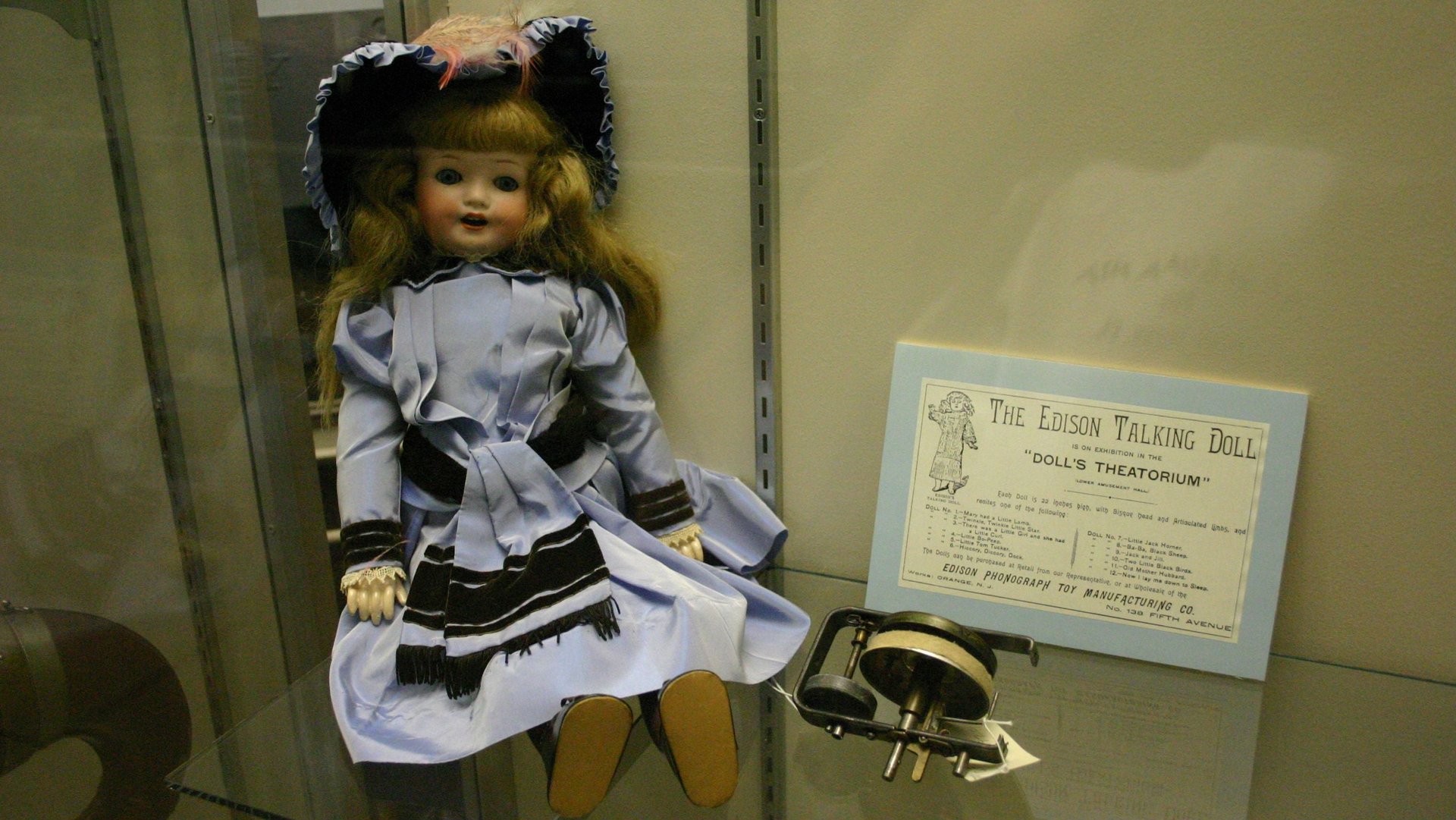Listen: preserved recordings of Thomas Edison’s creepy talking dolls are terrifying
Thomas Edison invented many things, most of which we take for granted today. But one of his creations should have, perhaps, been left to remain in obscurity.


Thomas Edison invented many things, most of which we take for granted today. But one of his creations should have, perhaps, been left to remain in obscurity.
Edison’s talking dolls, sold by his phonograph company in 1890, were a commercial failure. According to the New York Times (paywall), they frightened children and were pulled from the shelves after only six weeks. Though they were ingenious creations at the time, featuring some of the first recordings ever made, apparently there wasn’t much of an appetite for demonic dolls hissing nursery rhymes into a small child’s ear.
Over a century later, they aren’t any cuter. Listen yourself:
The Thomas Edison National Historical Park in New Jersey hosts an online library of salvaged recordings from the original dolls. Recently, it added recordings from Robin and Joan Rolfs, who were in possession of two of the dolls but were unable to play the recordings. They feared that, after all these years, the steel phonograph needle might damage the grooves on the cylinder that plays back the sound.
Luckily, some cool technology solved that problem. The Lawrence Berkeley National Laboratory and the Library of Congress developed an optical scanning method called IRENE-3D. According to the National Park Service, “The IRENE-3D system creates a digital model of the surface of a phonograph record. With the digital model, image analysis methods are used to reproduce the audio stored on the record.”
So as long as the grooves still exist, they can be modeled, and a computer can recreate the sounds you would have heard if a needle were to move through them. The Northeast Document Conservation Center in Massachusetts is currently leading the effort to make the IRENE technology more widely used.
Technology aside, the recordings are still quite unsettling. Good luck sleeping tonight.